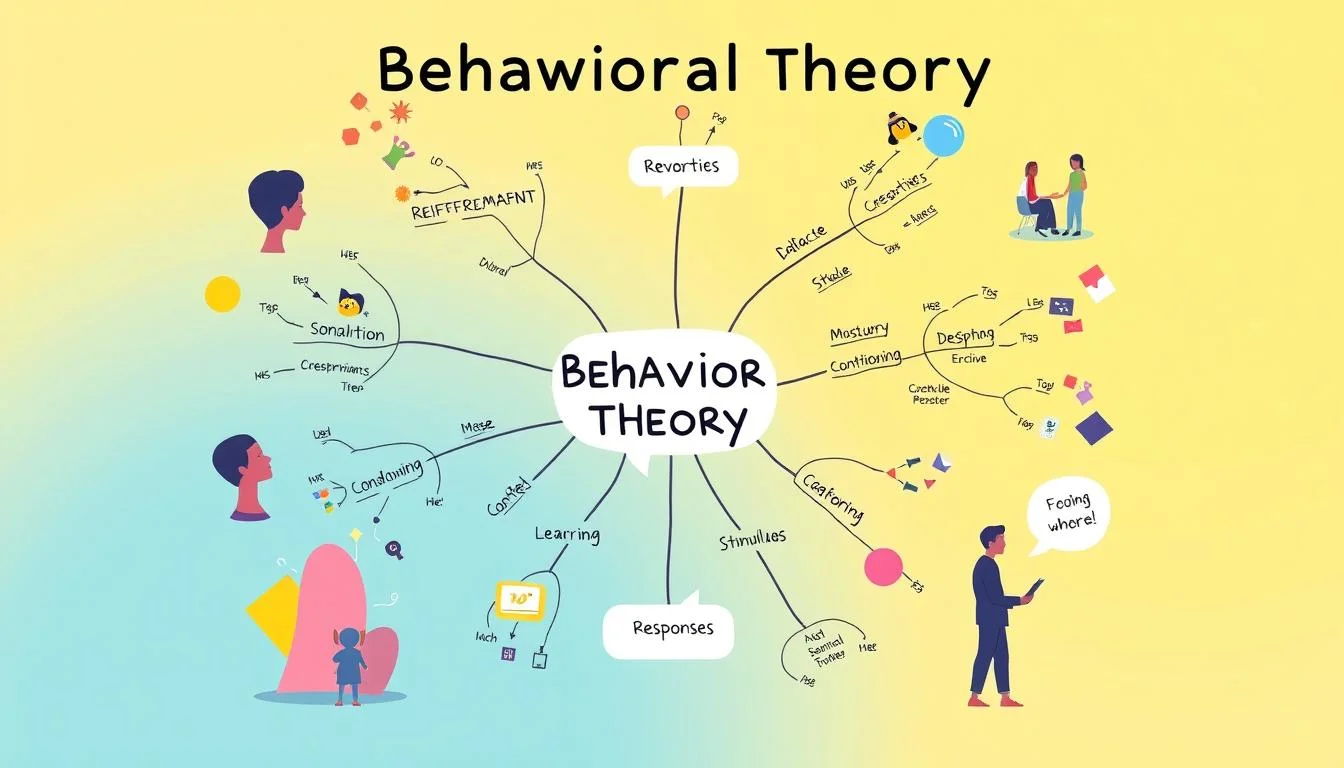Introduction
Have you ever wondered why people behave the way they do? Why some actions are repeated while others fade away? Behavioral theories in psychology provide powerful insights into how our environment shapes our actions, habits, and learning processes. Unlike approaches that focus on inner thoughts or emotions, behavioral psychology emphasizes what we can see and measure behavior itself.
What Are Behavioral Theories?
Behavioral theories propose that all behavior is learned through interaction with the environment. They focus on observable actions and believe that behavior can be conditioned taught, modified, or unlearned.
In simple terms, we act in certain ways because of the rewards, punishments, and observations we experience throughout life.
Major Behavioral Theories
- Classical Conditioning: Ivan Pavlov
Russian physiologist Ivan Pavlov discovered classical conditioning while studying dogs’ salivation. He noticed that dogs began to salivate not only when they saw food but also when they heard the footsteps of the lab assistant who brought it.
Pavlov paired a neutral stimulus (bell sound) with an unconditioned stimulus (food) to create a conditioned response (salivation).
Behavior can be learned through association linking one stimulus with another.
Real-life Example:
Fear of hospitals might develop if a child associates the doctor’s office (neutral stimulus) with the pain of injections (unconditioned stimulus).
- Operant Conditioning : B.F. Skinner
Psychologist B.F. Skinner expanded on Pavlov’s work by introducing operant conditioning, which focuses on how consequences shape behavior.
Skinner demonstrated that behavior is influenced by:
- Reinforcement: Increases the likelihood of repeating a behavior.
- Positive reinforcement: Adding something pleasant (e.g., praise for good work).
- Negative reinforcement: Removing something unpleasant (e.g., turning off a loud alarm by getting up).
- Punishment: Decreases the likelihood of repeating a behavior (e.g., a fine for speeding).
Real-life Example:
Employees work harder when praised or rewarded for good performance this is a clear case of positive reinforcement.
- Social Learning Theory: Albert Bandura
Albert Bandura believed that behavior isn’t shaped only by direct reinforcement but also by observing others. This is known as observational learning or modeling.
According to Bandura, learning involves four key processes:
- Attention: Watching others’ actions.
- Retention: Remembering what was observed.
- Reproduction: Imitating the behavior.
- Motivation: Being motivated to perform the behavior, often based on observed rewards or consequences.
We learn not only from personal experience but also from watching others and the results of their actions.
Example
A child learns to say “thank you” after observing parents or teachers model polite behavior.
- Behavior Modification
Behavioral principles are widely used in therapy, education, and everyday life to modify unwanted behavior and encourage positive habits.
Techniques include:
- Token economies: Reward systems in schools or therapy settings.
- Systematic desensitization: Gradual exposure to fears to reduce anxiety.
- Positive reinforcement programs: Used in classrooms or workplaces.
Example:
A teacher gives students points for completing homework, which can later be exchanged for privileges encouraging consistent academic effort.
Applications of Behavioral Theories
Behavioral psychology has practical uses in almost every area of life:
- Education: Reward systems to encourage learning.
- Parenting: Reinforcing good behavior and discouraging bad habits.
- Mental health: Treating phobias, addictions, and anxiety disorders.
- Business and management: Employee motivation and performance incentives.
Criticisms of Behavioral Theories
While behavioral theories have strong scientific grounding, critics argue they ignore internal mental processes such as emotions, motivations, and thoughts. Cognitive and humanistic psychologists believe that to fully understand behavior, we must also consider what happens inside the mind.
Conclusion
Behavioral theories revolutionized psychology by proving that human behavior is not fixed it can be learned, changed, and controlled through environmental influence. From classrooms to workplaces and therapy sessions, these theories continue to help us shape positive behaviors and create better learning environments.
Understanding behavioral psychology is not just about studying rats in a lab it’s about understanding ourselves and the forces that guide every choice we make.


